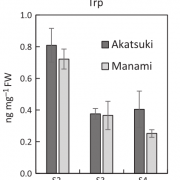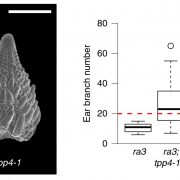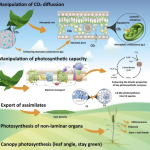Review: CRISPR screens in plants: Approaches, guidelines, and future prospects (Plant Cell)
 We don’t need to remind you of the tremendous positive impact that CRISPR-based technologies have had on the life sciences through enabling any gene to be edited precisely. Here, Gaillochet et al. provide an up-to-date review of a lesser-known application of CRISPR, its use in large-scale screening strategies. The authors start with a refresher in the types of activities that CRISPR systems can have (e.g., deletion, editing, activation), before shifting the focus to the use of CRISPR in screening. To test gene function, libraries of mutations induced by CRISPR have been produced, including a very large one spanning 83% of rice genes, and one addressing the functions of LRR-RLKs in tomato. CRISPR has been used to introduce targeted sequence diversification, for example to slightly modify promoter sequences and so generate alleles with a broad, continuous range of expression levels, and several other sophisticated screening strategies are described. The authors then provide an in-depth look at how to design a CRISPR-knock-out screen, including which editing tool to use, screening format, number of targets, guide RNA library construction etc. The review concludes with a look forward at applications that lie ahead, such as the ability to be able to record gene-editing outcomes at the single cell level. (Summary by Mary Williams @PlantTeaching) Plant Cell 10.1093/plcell/koab099
We don’t need to remind you of the tremendous positive impact that CRISPR-based technologies have had on the life sciences through enabling any gene to be edited precisely. Here, Gaillochet et al. provide an up-to-date review of a lesser-known application of CRISPR, its use in large-scale screening strategies. The authors start with a refresher in the types of activities that CRISPR systems can have (e.g., deletion, editing, activation), before shifting the focus to the use of CRISPR in screening. To test gene function, libraries of mutations induced by CRISPR have been produced, including a very large one spanning 83% of rice genes, and one addressing the functions of LRR-RLKs in tomato. CRISPR has been used to introduce targeted sequence diversification, for example to slightly modify promoter sequences and so generate alleles with a broad, continuous range of expression levels, and several other sophisticated screening strategies are described. The authors then provide an in-depth look at how to design a CRISPR-knock-out screen, including which editing tool to use, screening format, number of targets, guide RNA library construction etc. The review concludes with a look forward at applications that lie ahead, such as the ability to be able to record gene-editing outcomes at the single cell level. (Summary by Mary Williams @PlantTeaching) Plant Cell 10.1093/plcell/koab099








